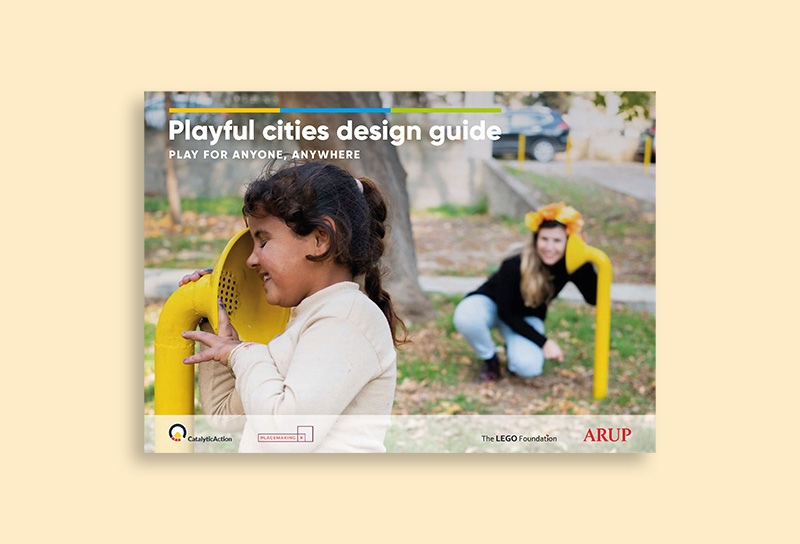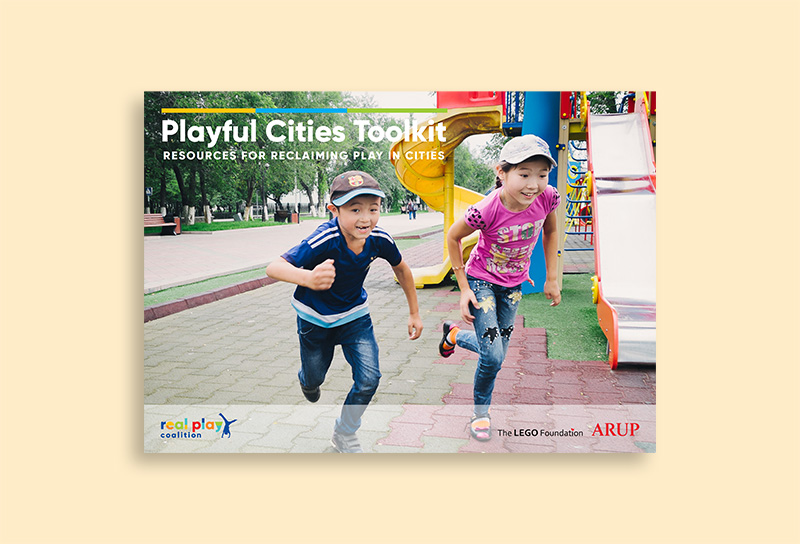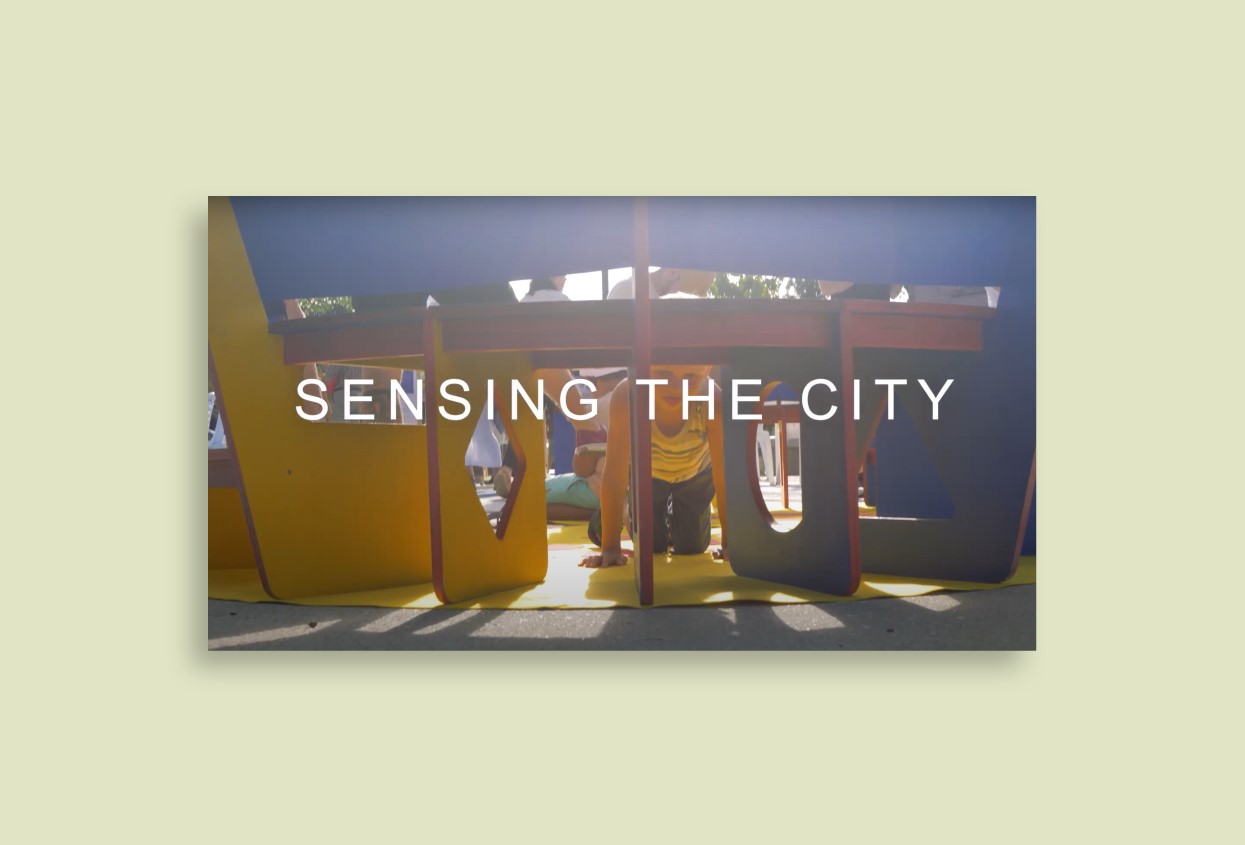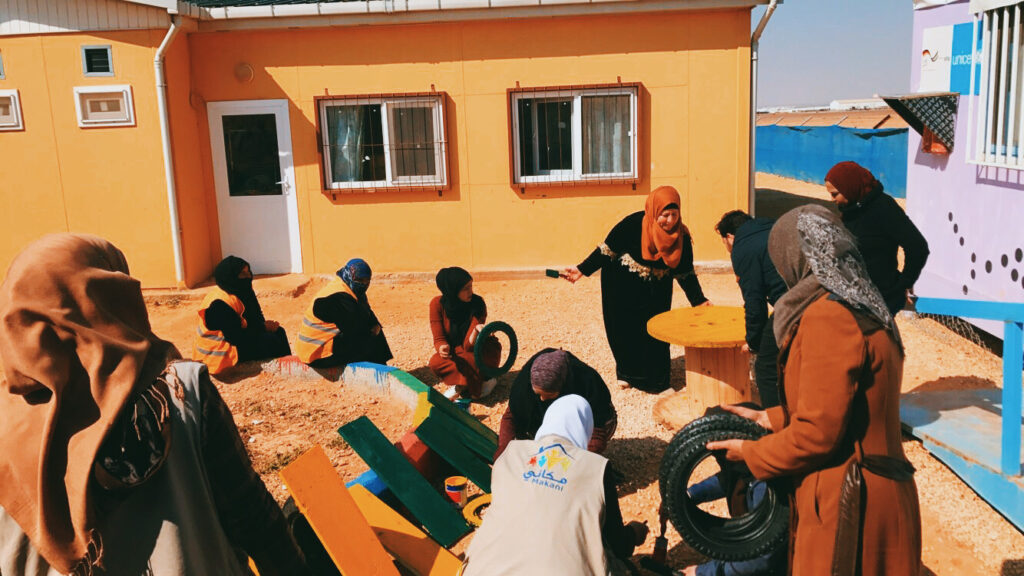
Overview
Location:
Azraq, Jordan
Organisation:
Civic Jordan (Majlisna)
Partner organisations:
Bernard van Leer Foundation; New Azraq Municipality; local CBO’s
Year:
2021
Scale of proximity:
Neighbourhood
Target beneficiaries:
Children 0-6; Caregivers
Connecting refugee camps and host communities through play spaces
Play is a powerful tool for supporting a child’s development, and public play spaces can create nurturing environments that benefit the whole community. In 2019, Civic Jordan (Majlisna) developed the Azraq Alive Project to explore the connection between refugee camps and their host communities. The project aimed to understand how the urban environment and development projects must evolve to address the changes that occur when there is a sudden influx of people.
The Azraq Alive Project collaborated with the Bernard van Leer Foundation, the New Azraq Municipality, and many local community businesses to create different playscapes for caregivers and children aged 0-6 years old in Azraq town and the refugee camp. Although the active implementation of the project finished in 2021, it still has ongoing activities to this day.
To support this project, the Proximity of Care framework was embedded into Civic Jordan’s unique model, which revolves around place-based projects that empower families in marginalized Jordanian communities. This model connects a network of unlikely allies, both individuals and organizations, creating opportunities to demonstrate the power of the collective by working together to co-design their vision of a better reality.
Understanding how to centralize the needs of young children and caregivers through urban design
Through our experience, we have learned that community involvement is crucial in designing and implementing programs to ensure their relevance and sustainability. It fosters a sense of ownership and investment in the project among community members and their leaders. Our application of the Proximity of Care (PoC) approach in Azraq facilitated the identification of specific needs and gaps in the provision of public services, particularly the lack of accessibility to the existing playscapes for young children and their families in the central area of the city.
Designing for young children and their caregivers in an over-researched context can pose challenges, particularly in focusing on their specific needs rather than the community as a whole. The participatory design approaches we used in the past were enhanced by the PoC guide, particularly the transect walk tool and the Key Informant Interview tool. These tools allowed us to engage more deeply with the target audience and gain insights into their needs within an urban setting. The YARD app was also a helpful tool in understanding the design process and visualizing its outcomes in real time.


Illustration of different games designed using reused materials like tires, pipes and appropriate chains from Azraq. Games include typical ones like swings [left] or balance games [right]
The project faced challenges in reaching and engaging certain groups of caregivers, particularly those who were more isolated or facing significant barriers to participation. Overcoming this required creative and targeted outreach efforts and a willingness to adjust the approach as needed to better meet their needs. Our design solutions utilized existing knowledge of the community incorporated data-driven insights and prioritized equitable and accessible design to promote a sense of belonging in the created play areas.
Designing and implementing holistic playscapes
Azraq Alive combined three different methods to support local communities:
(1) Starting with building a connection with the local community of caregivers
(2) Expanding into developing a small-scale public space program
(3) Inquiring about tools to upgrade and achieve the betterment of these public spaces for the local community.

Using discarded tires as planters with the help of municipality workers as well as caregivers from the local community.
The project aimed to identify the latent assets that exist within local communities and build upon them. Rather than trying to reinvent the wheel, it was a means of reusing existing materials to create several play and gathering spaces, such as wooden pallets, wheat bags, mud, PVC pipes, natural basalt stone for pedestrian paths, and abandoned buildings to create spaces, activities, and tools for the local community.
The design was implemented in collaboration with both the local caregivers and the municipality, given their limited capacity. This approach highlighted the project’s commitment to sustainable and inclusive design practices that prioritize using locally sourced materials and community participation.
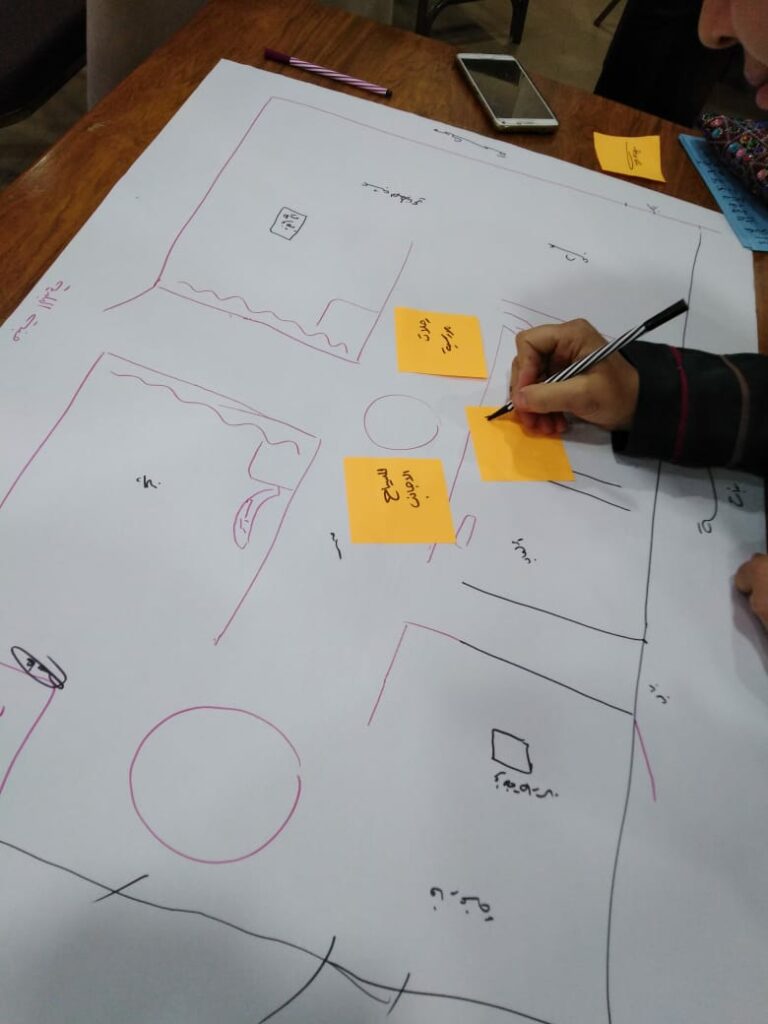
Playful assets were co-designed with caregivers and the municipality.
Throughout the project, it was crucial to remain flexible and adapt programs to the unique needs and circumstances of the local context. Flexibility allows for tailoring programs to the specific needs of the community and evolving as those needs change. The designers also needed constant flexibility for the solutions they were designing.

Caregivers coming together to paint wooden palettes and create games that they have contributed to designing with their insights.
The implementation of the project in 2020, during the year of COVID, required the team to adapt how data was collected, analyzed, and proofed. Developing hybrid co-design tools that were both digital and physical was also necessary.
The Proximity of Care guide is full of useful resources and guidance, no matter what your role or background in urban design is. The guide encouraged our team to consider different aspects of the design methodology, starting with the Stakeholder Map Tool. This tool allowed us to connect to a wider audience for the implementation of the project, to the provided design ideas, and even with the case studies, which helped in clarifying different ideas for different stakeholders.
This guide has provided our young initiative with the tools to tackle complex urban environments with a simple unified language between different stakeholders from different professional backgrounds, and we hope it will continue to do so.
Influence: Working collaboratively to ensure design projects have a more
Starting the project with the idea of utilising the latent assets in a community puts it in a purely collaborative spirit. The collaborators started from the municipality to ensure the programmatic sustainability of the activities, advocated for by a community of makers that have been involved in creating games and co-designing with caregivers. Not to forget the incredible support of local community-based organizations like Al Irfan Organization and Sayyedat AlAzraq.
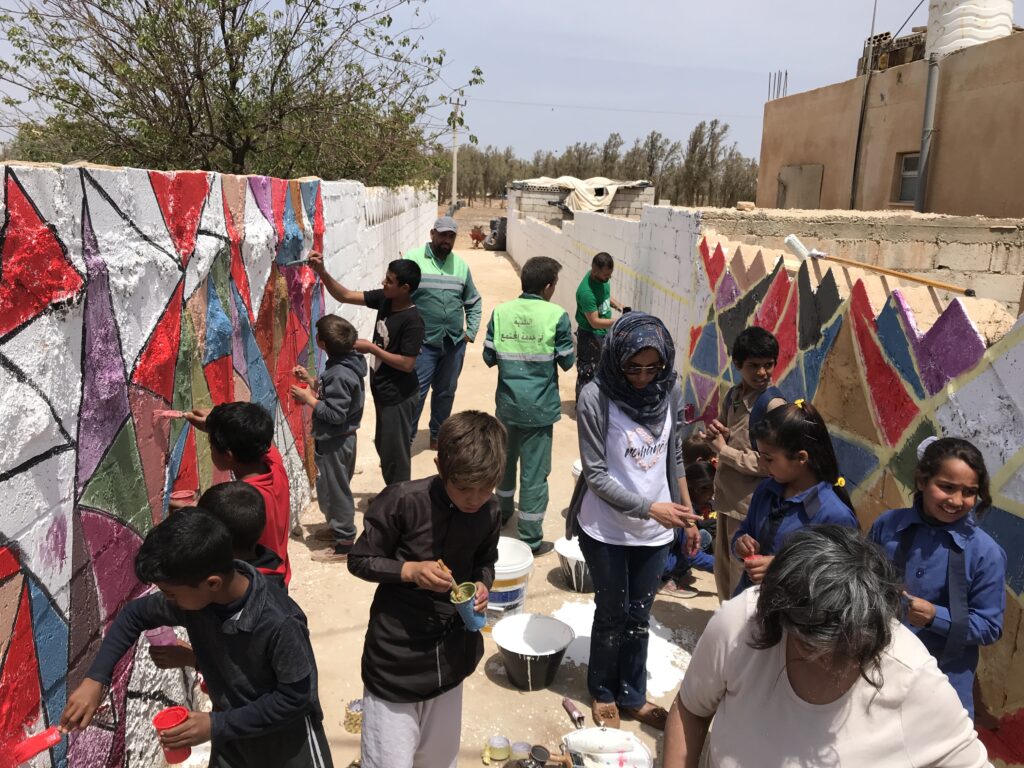
Children, caregivers, youth volunteers, and municipality workers coming together to paint murals near the implementation site.
Though after the activities ended, and with the support of the municipality, local CBOs have taken the mantel in applying the support and the tools that we have used in the local community. This, in turn, has attracted the attention of international NGOs like Care International which has funded and created different programmes utilizing the spaces that we have created.
All these different communities have come together to make Azraq Alive an initiative of the people and for the people.
Three lessons learnt from applying the Proximity of Care approach
The Proximity of Care guide has helped in forming ideas for other projects that we have worked with on different scales, particularly in our current Living Neighbourhoods Project that is being implemented in Irbid, Jordan. Based on the challenges faced and lessons learned across these projects, our advice to others would be:
(1) Prioritize community involvement and be creative and persistent in reaching and engaging hard-to-reach groups.
(2) Take a holistic approach when designing and implementing programs, remembering to remain flexible and adaptable to changing needs.
(3) Seeking out and leveraging partnerships and collaborations can help maximize resources and expertise, creating a more sustainable impact.
Sources and links

